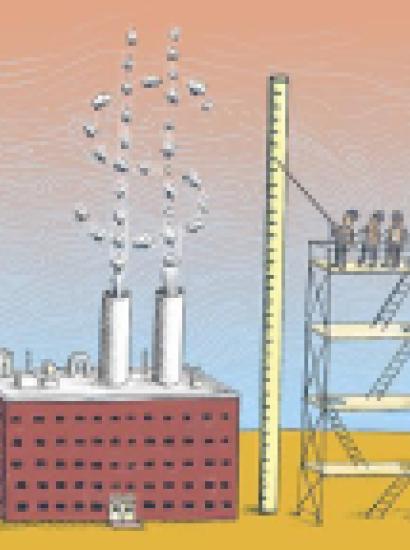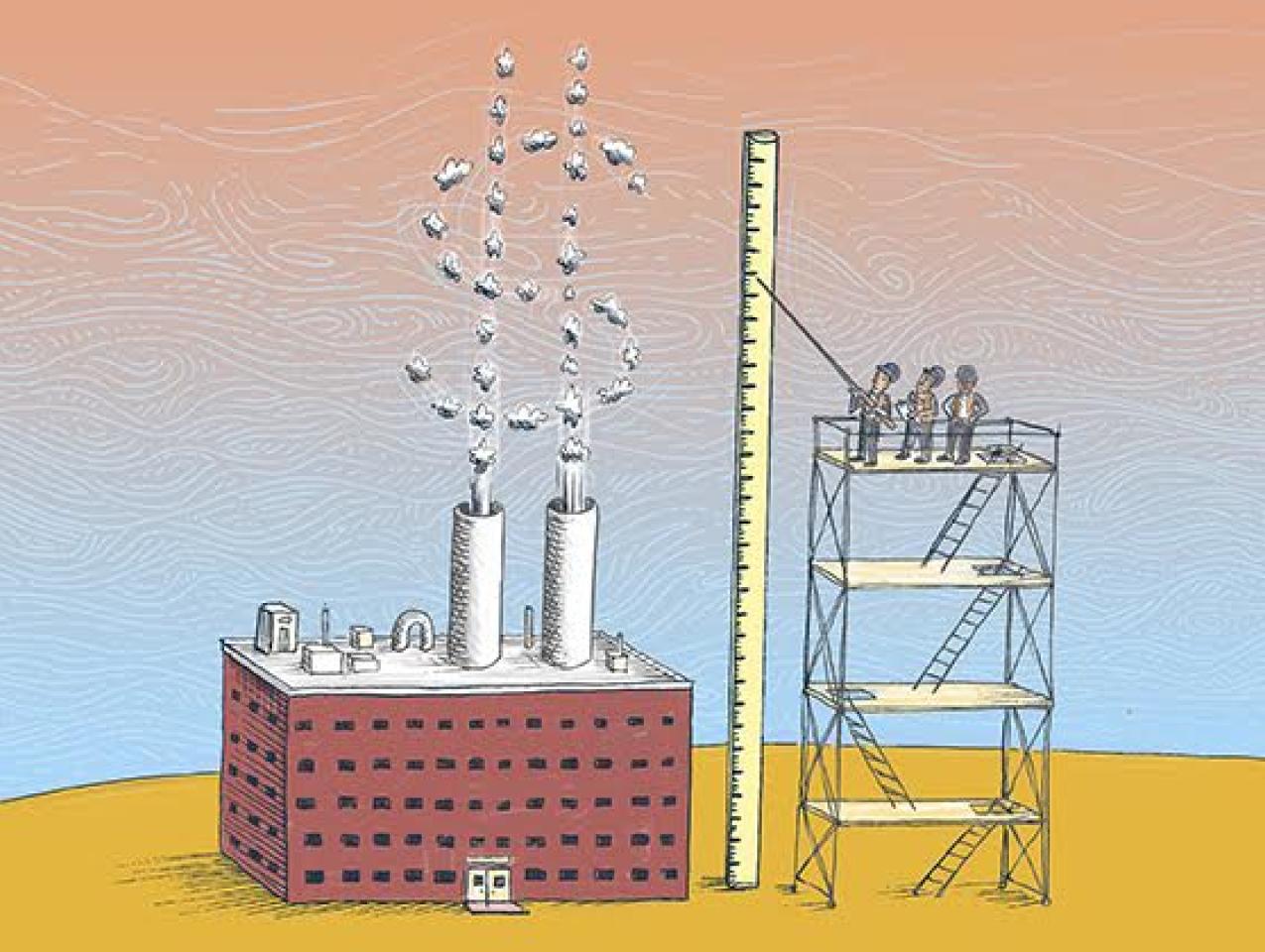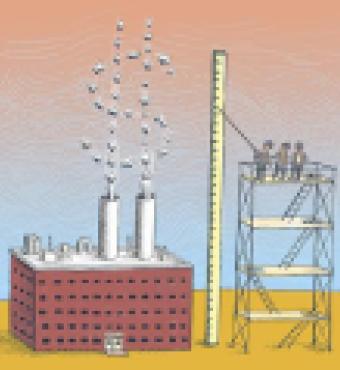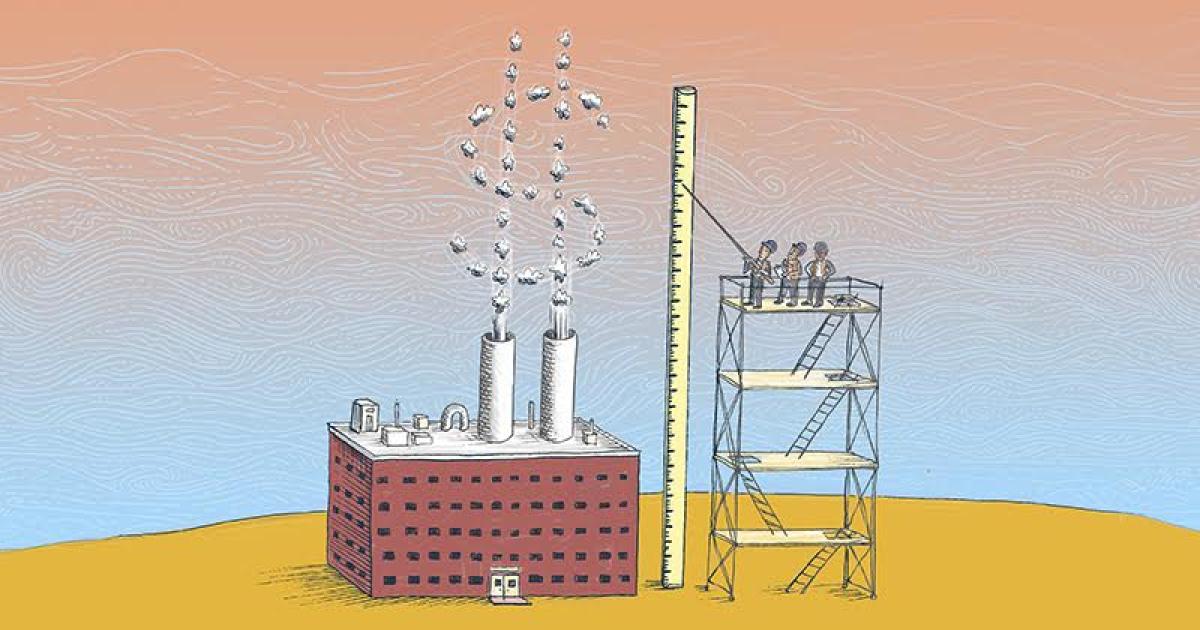- Economics
In his famous 1960 paper, “The Problem of Social Cost,” published in the Journal of Law and Economics, Nobel Prize winner Ronald Coase argued that command-and-control regulation of the environment could be more costly than the problem of pollution itself. He outlined an alternative, the assignment of property rights to environmental goods that could be traded, to achieve a far less costly and more effective response to environmental problems. This insight became the basis for so-called cap and trade programs that have been implemented to address greenhouse gas emissions.
In theory, cap and trade for greenhouse gas controls works like this: A cap on emissions is set and emissions permits are distributed within the cap. Permits must be released by offending firms for every metric ton of CO2 released. Firms that have high compliance costs need more permits than they hold, forcing them to go to the market to buy permits from firms with lower compliance costs. Over time, permit prices rise to the marginal cost of compliance and, in turn, equal the marginal benefit of abatement. Rising permit prices thus encourage all firms to reduce emissions because there now is a cost to pollute and firm owners can search for the most efficient way to address it.
Cap and trade systems have been implemented in California, a consortium of northeastern states, including New York and Massachusetts, the European Union, Quebec, and in parts of China. California Governor Jerry Brown and the state legislature recently extended and broadened California’s climate regulations. California has linked its trading system with Quebec and the Governor plans to host the next United Nations International Conference on Climate Change to distinguish his administration from that of President Trump, who pulled the US out of the Paris Agreement on Climate Change.
The problem, though, is that cap and trade programs, such as California’s, are universally failing to meaningfully limit greenhouse gas emissions. This outcome could have been an example of textbook economics gone wrong, but it isn’t. Had the theory been followed, the permit market would have resulted in decreases in emissions and there would have been little role for politicians and regulators, other than setting the cap. But, naturally, the theory has not been followed.
The sources of failure are the same across the various countries and states, so I will focus on California’s AB 32 and the European Union’s Emission Trading Scheme (EU ETS). AB 32, The Global Warming Solutions Act, was passed in 2006 by the legislature, and it required that California reduce its greenhouse gas emissions to 1990 levels by 2020. A state regulatory agency was assigned authority to implement the law, and cap and trade in pollution permits among regulated firms, mostly electric utilities and refineries and other heavy industries, was to be the centerpiece. As it turns out, cap and trade was sidelined by dizzying array of other climate change programs championed by the governor and legislature and state regulatory agencies.
Similarly, the EU created a greenhouse gas emissions permit trading system for utilities and other heavy industries within its member states in 2003 to lower emissions by 20% of 1990 levels. As in California, a declining cap on total emissions was set. In both California and the EU, each emissions permit within the cap was for the release of one metric ton of greenhouse gases. Initially, a large share of the permits was granted to regulated firms and industries for free, but over time, auctioning has been the dominant means of allocation. In the EU between 2013-15, auction revenues were 11.71 billion euros or $13.82 billion at current exchange rates. In California between 2012 and 2017, $4.4 billion was raised in auction revenues. In both jurisdictions, these auction revenues have been highly coveted by politicians, regulatory officials, and green advocates for subsidizing a myriad of other climate change initiatives and regulations, such as investment in renewable fuels, that have competed directly with market-based cap and trade as shown below.
As a result, trade of permits in California has fallen sharply. Permit prices that were in the range of $18-$22/ton in 2011have fallen to between $12 to $13 per ton since 2013. These prices are nowhere near the so-called marginal social cost of carbon, which is the estimated economic cost caused by the release of an additional ton of carbon dioxide emissions or its equivalent. The social cost of carbon was developed by climate change modelers and used in the Obama Administration to assess the impact of various government programs on climate change. Depending on the discount rate used, social cost of carbon estimates currently range from $31 to $56 per ton of CO2. Similarly, permit prices in the EU ETS, which in 2006 were as high as $35/ton have dropped to about $9/ton since 2012. Neither of these low permit prices provides much market incentive for the voluntary emission reductions envisioned by Coase and advertised in the EU and California cap and trade programs. What has been happening?
The major problem is that politicians, regulators, and green interest groups in California and the EU have become fixated on the opportunities to fund new climate change mandates that both displace voluntary market-based cap and trade and raise the costs of compliance. While auctioning permits to firms that must hold them clearly is a tax that transfers wealth from consumers and shareholders to the government, the bigger problem is what the government does with the money—in California, it subsidizes high-speed rail, electric vehicles, and renewable energy sources—wind and solar, all of which are aimed at meeting greenhouse gas reduction goals in competition with cap and trade, where rising permit prices would do the job. It is the same in the EU, with subsidies going for various “climate actions,” such as non-fossil fuels, other new, green energy sources, and “sustainable” transportation. Moreover, polluting firms can purchase “offsets” rather than buying permits.
The EU ETS allows regulated firms to buy international carbon credits to offset their releases in the EU. European firms pay governments and non-government organizations, primarily in China, India, Russia and the Ukraine to reduce emissions, instead of purchasing permits for the same amount of greenhouse gas releases. Offsets typically are cheaper than permit prices, even at their current low levels. Further, the European Investment Bank buys offsets in developing countries to meet Europe’s emission targets. Offsets include paying farmers to hold forests or avoid other land use changes that could release gases. Regardless of how high-sounding these actions are, offsets are determined by collaborating governments and non-government organizations as a type of social and economic planning, and they displace the use of the permit market to achieve the environmental objective. The problems of verifying compliance in these countries and whether or not actual additional greenhouse gas emissions are reduced by such actions are obvious. Similarly, in California, firms can purchase offsets, rather than emission permits, and state regulators play a heavy hand, determining what projects qualify for selling offsets. The Forest Service, dairy and livestock raising, and rice cultivation all qualify with firms paying others to adopt actions determined by state regulators to reduce greenhouse gas releases.
The second and related problem facing cap and trade is that the command-and-control regulations it was designed to replace have not only remained in place, but expanded —choking off demand for emission permits. For example, California regulators adopted a suite of vehicle efficiency standards, building and appliance efficiency standards, renewable energy portfolio standards, and low carbon fuel standards. Electric utilities, otherwise the primary demanders of emission permits, must get one-third of their electricity from renewable sources by 2020 and half by 2030. Further, the state has mandated that more electric cars be purchased to meet reduced emissions targets. Currently, to meet fuel efficiency standards, auto companies selling the internal combustion vehicles that consumers want annually must purchase offsets from electric car makers, such as Tesla, who face unenthusiastic consumers. The situation is very similar in the European Union where a multitude of new fuel efficiency regulations and green fuel standards have been adopted.
In an ideal permit market, all of these regulatory mandates, standards, and government subsidies would be unnecessary. Firms would adopt whatever actions lowered emissions in order to save on permit purchases. Investment in new energy sources could take place privately with new discoveries adopted by regulated firms to reduce their pollution, to lower their permit demand, and to free up permits for sale to less innovative firms. The cap could be tightened gradually to meet new total emissions objectives, raising permit prices, and firms would continue to respond privately with new innovation. The need for regulatory and political intervention would be limited to setting the cap, monitoring compliance, and ensuring that the permit trading platform was effective. Special interests that have appealed to government for subsidy handouts would have no role, except to entice investment from private regulated firms.
This is not the outcome we observe, however. Rather, climate change regulations force firms and citizens to act in certain ways. The observed growth in regulatory mandates and subsidies provide broad authority to politicians and bureaucrats and opportunities to special interests. These regulations and subsidies have so squeezed cap and trade permit demand that in California the primary state regulatory agency, the California Air Resources Board acknowledges that cap and trade may account for 20% or less of the state’s greenhouse gas control efforts. There is no real environmental market there or in Europe.
Where do we go from here? Regardless of the merits of unilateral actions by governments to control global greenhouse gas emissions, it is clear that politicians, agency officials, and advocacy groups have hijacked the process. Central planning and regulation, not market trading, is and will be the dominant approach to climate change mitigation. The lure of auction revenues, the ability to subsidize favored entities and penalize others, and, more dangerously, the justification for gradually constraining property rights and markets throughout the economy in the name of saving the planet is too much for government officials and advocacy groups to resist. The costs will mount.
What has all this achieved in California and the European Union? California emissions peaked at 489 million metric tons in 2004 and have fallen to about 440 million metric tons by 2015, which could be on target for achieving the goal of reducing state emissions to 1990 levels by 2020, depending on population growth and economic activity. Except, the state recently upped the target to 40% below 1990 levels by 2030 and 80% below 1990 by 2050. These goals will be much more difficult to meet in a state that could have its population rise to 44 million by 2030 with a much larger economy. Cap and trade is not the focal point. Governor Brown argued that the “coercive power” of government will be used. The European Union similarly could meet its 2003 goal of lowering emissions by 20% of 1990 levels by 2020, but reducing them further by 40% of 1990 levels by 2030 will be far more difficult. In both jurisdictions, the low-hanging fruit have been picked and because market mechanisms are peripheral to achieving the goals, more regulatory mandates and subsidies are in store.
What does all this cost the citizens of California and the European Union? No one really knows because there is no comparison jurisdiction where cap and trade has played the primary role. And politicians, regulators, green advocates, and many journalists are far more interested in touting the asserted benefits than in measuring costs. Although the websites of the main regulatory agencies in California and the European Union provide data on greenhouse gas reductions and laudatory discussions of various regulatory mandates, they do not provide data on the estimated costs or their distribution among the population. The poor, who spend a greater share of their incomes than do the wealthy, likely will bear much of the burden of higher energy costs and mandated changes in the economy.
Why might we predict that the costs are higher with expanded regulation than with market-based cap and trade? Here are some reasons: Politicians and bureaucrats do not bear direct economic costs from their decisions. Many of the mandates are for the future when both parties will be long gone. Further, the benefits of subsidies are narrowly focused on lobbying interest groups, who reward politicians and agency officials with political and financial support, encouraging more subsidies regardless of their economic merits. Alternatively, regulated firms and consumers do bear direct economic costs. For consumers, these costs are broadly spread and they have difficulty linking them with particular regulations, especially because politicians and bureaucrats provide little cost information. Shareholders of regulated firms, however, can detect higher regulatory-based costs and how they affect competitive positions. Compliance costs also are much higher for meeting a vast menu of mandates, as compared to responding to higher permit prices in cap and trade. Already there are concerns that higher energy costs are contributing to firms leaving California and the European Union for less regulated areas. This phenomenon has been called “leakage,” euphemistically by regulators, but it should be called regulatory “cost-induced” exit! If cap and trade were the dominant mechanism for achieving greenhouse gas reductions, as argued above, firms would have incentive to find the low-cost way of achieving reduced pollution. Their shareholders and consumers capture the benefits.
So long as these so-called cap and trade programs are limited to certain states and countries, citizens can migrate to avoid the costs. National and international programs such as the Paris Accord, however, are far more treacherous, because firm and citizen migration becomes less feasible, and the demonstration effects of the costs inflicted by governments in one area, but not another, less apparent.
















